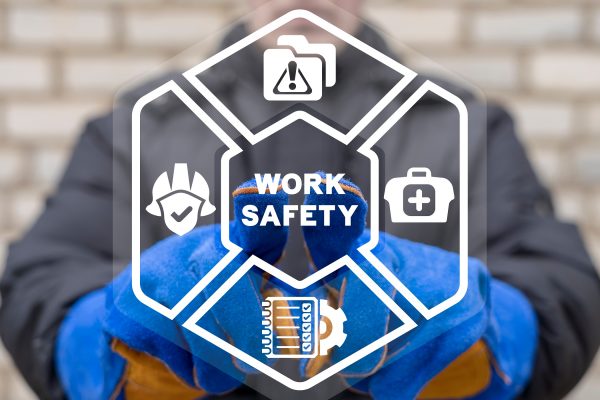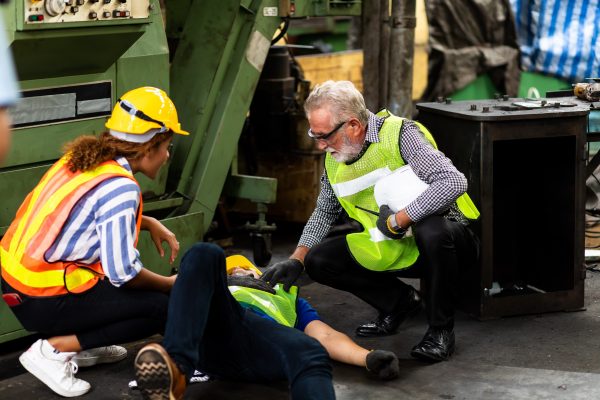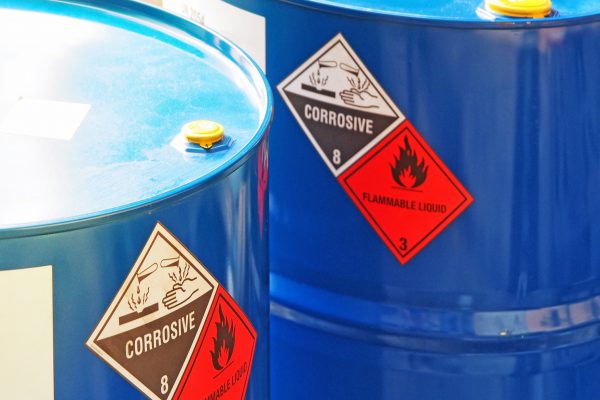Did you know that next year will be the 30th anniversary of the introduction of the Management of Health and Safety at Work Regulations 1992 (commonly referred to as the Management Regulations). These same Regulations were then revised in 1999. This article does put the reader slightly ahead of the curve, but others will no doubt also be referring to this notable anniversary sometime soon!
With COVID-19 restrictions now loosened by the Government and with the instruction that most employees can now return to their normal work environment (rather than working from home) it would be correct to say that the importance of risk assessment has been highlighted like never before. Consequently, risk assessments should be uppermost in the minds of all Employers and their Managers.
With my special thanks to Nick Wilson CMIOSH (a former HSE Inspector) I want to share with you my top 10 targets for your Risk Assessments, (after Nicks’ recent article was published on the IOSH website magazine). His article prompted me to thinking about applying the Management Regulations.
Employers and their managers might choose to set targets (or objectives) for their business. Meeting predetermined targets is an example of aiming for excellence. Managers should set targets for measuring compliance with their own policies and procedures for managing their risk assessments.
As a process risk assessment can be described as being a systematic and critical approach to identifying hazards in the workplace and then evaluating the risk (the likelihood) of harm to persons, as a consequence of uncontrolled (or even inadequately controlled) exposure to known hazards.
Risk Assessment forms the foundation of an effective Health and Safety Management System. We all recognise and understand that risk assessments are a statutory requirement. Beyond simply achieving compliance with the Management Regulations, conducting a risk assessment that is both ‘suitable and sufficient’ (as is required under regulation 3 to the Management Regulations) will help all Employers and their Managers to do the following:
- Recognise the hazards (being anything / something with the potential to cause harm.)
- Define sensible risk control measures that meet the differing standards of the law.
- Raise awareness amongst the workforce (through informing, instructing and training).
- Reduce the likelihood of incidents that cause physical injury or ill health to workers and others… thereby protecting both employees and non-employees and the organisation more generally.
Getting it right is vital… however, things can be missed. Investigations into incidents have often revealed the inadequacies of the Employers own risk assessments. Past evidence has shown that had a risk assessment been properly conducted and the specified risk controls then fully implemented; such action could have avoided serious harm (or an even worse outcome).
10 TARGETS FOR YOUR RISK ASSESSMENTS
1. Equip Staff Appropriately – this inspires their confidence.
Any person completing a risk assessment must be competent to do so. It is for the Employer to ensure that those they appoint to undertake risk assessments on their behalf are competent.
Competence can be defined as those persons having the necessary Skills, Knowledge, Experience and Training to identify hazards and to then specify appropriate, sensible and proportionate risk control measures (these are recognised as being both preventative or protective measures).
Organisations with a low risk profile could train an employee (or employees) to conduct risk assessments on the Employers behalf. HSE guidance (INDG163 (rev4) ‘Risk assessment – A brief guide to controlling risks in the workplace’ together with interactive e-Learning courses can help achieve this. In more complex organisations, risk assessor training packages will build on this requirement for competence.
2. Involve Others in the Risk Assessment Process
Remember: risk assessment should not be the responsibility of a singular person. By collaborating with those persons who will actually do the work activity that is being assessed means it is more likely the Employer will then emerge with an assessment that it is much closer to being both suitable and sufficient and more likely to be accepted by workers.
3. Identify How Somebody Could Be Harmed
Sometimes the terms hazard and risk get confused. The hazard (described as being anything that has potential to cause harm) must be identified separately. Against the hazard, provide a description as to the risk of how somebody could be harmed. For example, a rotating drill is a hazard and entanglement with the rotating drill (thereby leading to injury) is the risk!
Tip: Keep in mind that other risks which will demand separate attention. So… make sure the reader is clear about which of your specified risk control measures will control what risks.
4. Refer to Guidance Readily Available and often Free Of Charge
To ensure you’re following industry best practice, look at guidance published by national regulators, trade associations and other expert organisations in your industry sector. Where appropriate reference this guidance in your risk assessment to demonstrate robustness and to increase worker confidence in the finished article.
Tip: The website of the HSE is a great starting point for relevant publications.
5. Likely Points that Should Be Addressed in the Finished Risk Assessment
For any risk assessment, consider the following:
- Providing safe access / egress arrangements at (and around) the workplace.
- Preventing contact with dangerous parts on plant, equipment and machinery through the use of fixed guards, adjustable guards and other safety devices.
- Health monitoring and health surveillance needs (sometimes a statutory requirement).
- Maintenance and Inspection regimes (and the need to keep appropriate Records).
- Operators / Users own Pre-use checks. (Recording these “user” checks is a “good practice” but it is not a statutory requirement).
- Refer to previous incidents and any Accident and Near-miss Reports available to you.
- Developing written Safe Systems of Work (SSoW) for higher-risk activities or work equipment.
- The safe start-up and stopping of machinery and plant under normal operating conditions and isolation procedures for dealing with foreseeable emergencies, maintenance and repairs.
- Risk assessments, particularly for machinery, must consider normal operating conditions and non-routine activities such as maintenance, inspection and cleaning and dealing with breakdowns.
- The type of risk control measures to be implemented to manage any risk of harm to an acceptable level.
Tip: Keep in mind that PPE should not be a Risk Assessors the first consideration.
6. Avoid Generic or Ambiguous Terms in the Risk Assessment
Avoid using terms such as ‘heavy’ and / or ‘PPE’. Instead, use more precise weight measurements, for example ‘up to 25kg’, and explicitly state the type of PPE to be worn and even the required standard of the PPE to be supplied. (Usually found labelled on the item itself or in the manufacturer’s instructions). Similarly, you must be specific with your statements, for example ‘a person will / must / shall use hearing protection’.
Tip: It should read as an instruction and not a request; therefore avoid using the word ‘please’ in your risk assessments.
7. Provide A Defined Matrix With Definitions
Whether using a quantitative scoring system or a qualitative system, the reader should understand how the level of risk has been determined. The descriptors for likelihood and severity should be clearly set out.
8. Share the Findings of your finished Risk Assessment with Workers
There is no point in carrying out risk assessments if you do not then share the findings of the assessment with those who are likely to be harmed. Ensure risk assessments are shared with your staff (and where applicable other non-employees). Develop and maintain documented evidence that relevant persons have both seen and understood the contents to the risk assessment. Select an appropriate means to get all of the essential information across to your workers.
9. Review Your Risk Assessments Regularly
The Management Regulations do not specify the frequency for reviewing risk assessments, but… these important documents must be kept up to date. List all risk assessments and the planned date for each review. Ensure you stick to these dates.
Tip: The review date should be specified within each Risk Assessment; or it will be done whenever something has changed significantly and thus giving reason to believe any existing risk assessment may no longer be ‘suitable and sufficient’ as it stands.
Tip: When an accident has occurred at work then it means something has probably gone wrong. It (the accident) is just one example of when you should at the very least consider a review as to the adequacy of any relevant risk assessment that was in place at the time of the accident!
10. Refine ‘Generic’ Risk Assessments
‘Generic’ risk assessments that reflect certain activities that are common throughout the workplace and across other sites within a business can be a good starting point.
Tip: make sure the recipients of such risk assessments modify these documents if required, so that the finished document is both task-specific and actually reflects working conditions and the work to be done.
A Sensible and Proportionate Approach to Risk Assessment
Finally… below is a quote taken from Dame Judith Hackitt (past Chair of the Health and Safety Executive) with her thoughts about meeting the requirement for risk assessments. As a process Risk Assessment does not need to be overly complicated or too sophisticated and it certainly does not mean that Employers must eliminate risk at all costs!

Composer is a next-gen automotive platform that has been designed from the ground up to give you an intuitive way to promote your stock. You have extensive stock management options, and you'll gain a brilliantly responsive new website to advertise your stock, starting at just £39.99/month.
There is a need for a sensible and proportionate approach to risk management, in short, a balanced approach. This means ensuring that paperwork is proportionate; does not get in the way of doing the job:; it certainly does not mean risk elimination at all costs.
Judith Hackitt, HSE Chair
Keep your health & safety records up to date with our award-winning compliance software.
For more information about our health & safety templates please visit www.hrmanager.co.uk







